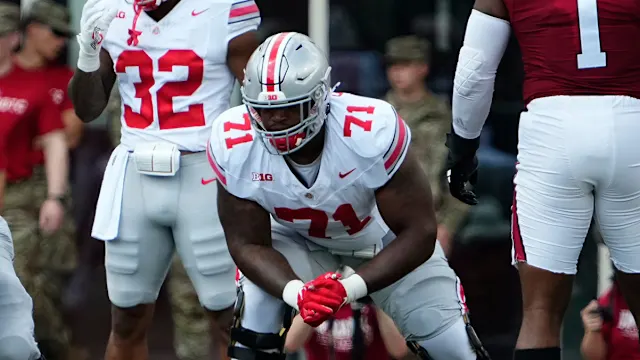Ohio State University’s football program has long been one of the most storied and successful in college football history. With national championships, conference titles, and a pipeline of NFL talent flowing through Columbus, the Buckeyes are synonymous with excellence in the sport. However, in today’s rapidly evolving college football landscape, success is no longer just about recruiting the best players or having a world-class head coach. To remain competitive at the highest levels, programs must adapt to changing dynamics, which now include a focus on off-field resources, recruitment tactics, and technological advancements.
Recognizing this, Ohio State is preparing to make a bold and strategic move in 2025 by significantly increasing its financial investment in the football program’s on-field support staff. This decision speaks volumes about the university’s commitment to maintaining its place at the pinnacle of college football and keeping pace with the ever-increasing demands of the sport.
In this essay, we will explore the significance of Ohio State’s decision to invest more in its football on-field support staff, the rationale behind the increased spending, and what this move means for the future of the Buckeyes’ football program. We will also discuss the broader trend of increased investments in off-field staff across college football, how this shift could affect Ohio State’s competitive standing in the Big Ten and nationally, and what impact this may have on recruitment, player development, and the overall success of the program.
The Evolution of College Football and the Importance of On-Field Support
College football has undergone massive changes in the past decade, driven by a combination of factors that include the implementation of the transfer portal, the explosion of Name, Image, and Likeness (NIL) opportunities, and the growth of broadcasting deals and social media platforms that amplify the sport’s visibility. In this new era of college football, recruiting is no longer just about finding high school talent—it’s about building a comprehensive program that supports the development and success of players both on and off the field.
On-field support staff has become one of the most critical components of a football program’s success. These staff members are the backbone of a well-oiled football machine, responsible for a wide array of duties that impact day-to-day operations, player development, and game preparation. Support staff includes analysts, video personnel, strength and conditioning coaches, quality control coaches, trainers, and nutritionists—all of whom work tirelessly behind the scenes to ensure that players are physically and mentally prepared for the demands of college football.
In the past, college football programs relied heavily on a head coach and a small group of assistants to manage the team. However, as the game has evolved, so too has the need for specialized support. Programs now require large, well-coordinated support staffs to handle the complexities of modern football. As competition increases, programs that fail to invest in their on-field support staff risk falling behind, as they may be unable to keep up with the logistical, technological, and player development demands of the modern game.
For Ohio State, this shift in priorities has become increasingly clear. The decision to allocate more resources to on-field support staff in 2025 is part of a broader strategy to remain one of the most dominant programs in the country. By investing in these key support areas, the Buckeyes aim to ensure their players are equipped with the tools and expertise necessary to succeed in the fast-paced world of college football.
The Rationale Behind Ohio State’s Increased Spending
The decision to increase spending on football support staff in 2025 comes after careful consideration of several factors that are reshaping the college football landscape. At the forefront of these factors is the growing competition in the Big Ten and nationally, as well as the increasing financial resources available to schools in the Power Five conferences.
One of the main drivers behind this decision is the pursuit of competitive advantage. Ohio State has been one of the top programs in the country for decades, but maintaining this status requires ongoing investments in player development, infrastructure, and talent acquisition. With rivals like Michigan, Penn State, and others investing heavily in their programs, Ohio State has no choice but to continue investing in its football operations to stay competitive.
In particular, Ohio State’s ability to recruit and develop top-tier talent depends heavily on the quality of its on-field support staff. A football team’s success is not determined solely by the head coach and a handful of assistants. The collective effort of a large support staff, including analysts, quality control coaches, and strength and conditioning personnel, is essential for preparing players for game day. Additionally, the rapidly growing importance of technology, data analytics, and video analysis means that a well-funded support staff is now critical for identifying potential talent, developing effective game plans, and providing individualized attention to players.
Furthermore, the increasing influence of NIL and the transfer portal has changed the way college football programs approach recruitment and retention. More than ever, programs must offer a comprehensive support system that includes not only excellent coaching but also resources like top-tier nutritionists, mental health professionals, and lifestyle coaches. Players are now more aware than ever of their worth and options in the market, and offering robust support systems is an effective way to keep players satisfied and motivated.
Key Areas of Investment for Ohio State
The increased spending on on-field support staff at Ohio State will likely be spread across several key areas, each of which is critical to the Buckeyes’ ability to compete at the highest levels. These areas include recruiting, player development, and game preparation.
- Recruiting Operations: In modern college football, recruiting is a year-round operation. While head coaches and assistant coaches may be the face of recruitment, much of the behind-the-scenes work is done by recruiting coordinators, analysts, and video specialists. Ohio State’s decision to increase spending will allow the program to enhance its recruiting infrastructure, which will involve expanding its recruiting staff, improving its data analytics capabilities, and utilizing advanced technology to evaluate recruits. By increasing resources in this area, the Buckeyes can streamline their recruiting operations, better target top talent, and stay ahead of their competition in the Big Ten and nationally.
- Player Development and Training: Another key area of investment for Ohio State is in player development, which includes strength and conditioning, mental health support, and academic guidance. Strength and conditioning coaches play a vital role in preparing players for the physical demands of the game, and their work extends beyond just lifting weights. Ohio State’s increased spending will likely go toward enhancing the player development experience, including building state-of-the-art training facilities and bringing in top-level professionals to provide individualized attention to players.
Additionally, mental health has become an increasingly important area in the development of young athletes. By expanding their mental health support staff, Ohio State can help players cope with the pressures of college football, including the demands of schoolwork, the intensity of practices, and the scrutiny that comes with being a high-profile athlete. Enhanced player development will not only help Ohio State retain top talent but also keep their athletes in peak physical and mental condition.
- Technology and Analytics: Technology plays an ever-increasing role in modern college football, and Ohio State is looking to stay ahead of the curve in this regard. Increased spending on support staff will allow the program to bring in analysts who can utilize cutting-edge technology to evaluate players, assess game footage, and develop effective game plans. Video analysis and data-driven decision-making have become integral to game preparation, and the Buckeyes will need to expand their technological capabilities to maintain their competitive edge. By investing in technology, Ohio State can gain valuable insights that give them a leg up on their competitors.
- Game Preparation and Scouting: The role of support staff in game preparation and scouting cannot be overstated. Analysts and quality control coaches are critical in breaking down film, identifying opponents’ tendencies, and crafting strategies that give teams a competitive advantage. As part of the increased spending, Ohio State will likely expand its support staff to include additional quality control coaches, film analysts, and scouts, enabling them to gather more detailed information and provide better-prepared game plans. This level of preparation could make a significant difference in close games and help Ohio State stay at the top of the college football hierarchy.
The Broader Trend of Investment in On-Field Support Staff
Ohio State’s decision to increase spending on its football on-field support staff is part of a broader trend across college football, particularly in the Power Five conferences. Programs like Alabama, Georgia, Clemson, and Michigan have made similar investments in their football operations in recent years, recognizing that success on the field is increasingly reliant on the strength of their support staff.
In fact, many programs are adopting a more holistic approach to their football operations, focusing not just on the head coach and assistant coaches but also on the vast network of support staff who play critical roles in recruiting, development, and game preparation. As a result, college football programs are hiring more specialists, improving their infrastructure, and expanding their support staff to maintain competitive advantage in an ever-evolving landscape.
What This Means for Ohio State’s Future
By investing more in on-field support staff in 2025, Ohio State is positioning itself for continued success in a rapidly changing college football landscape. With enhanced recruiting operations, player development, technology, and game preparation, the Buckeyes will be better equipped to compete at the highest levels, both within the Big Ten and nationally.
This investment reflects the university’s commitment to not only maintaining its football excellence but also adapting to the new realities of the sport. In a world where financial resources, technological advancements, and player development are increasingly critical, Ohio State’s increased spending on support staff will help ensure that the Buckeyes remain a force to be reckoned with for years to come. The future of Ohio State football is bright, and with these strategic investments, the program is poised to continue its legacy of dominance in college football.



